
| Stellar Evolution |
|---|
| From Middle Age to Death |
| Estimated Stellar Lifetimes(in units of 106 years) | ||||||||||||||||||||||||||||||||||||||||||||||||||||||||||||
|

therefore core shrinks and heats ---> hydrogen "burning" spreads Shell Hydrogen Burning Solar-mass star passes through later stages of its evolution |
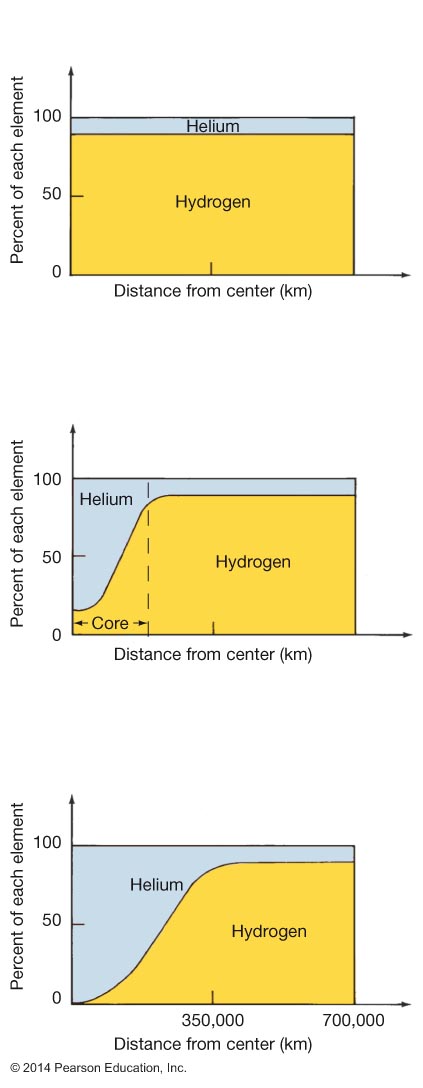 |
| Thermonulclear Reactions | ||||||||||||
|
|
 |
|
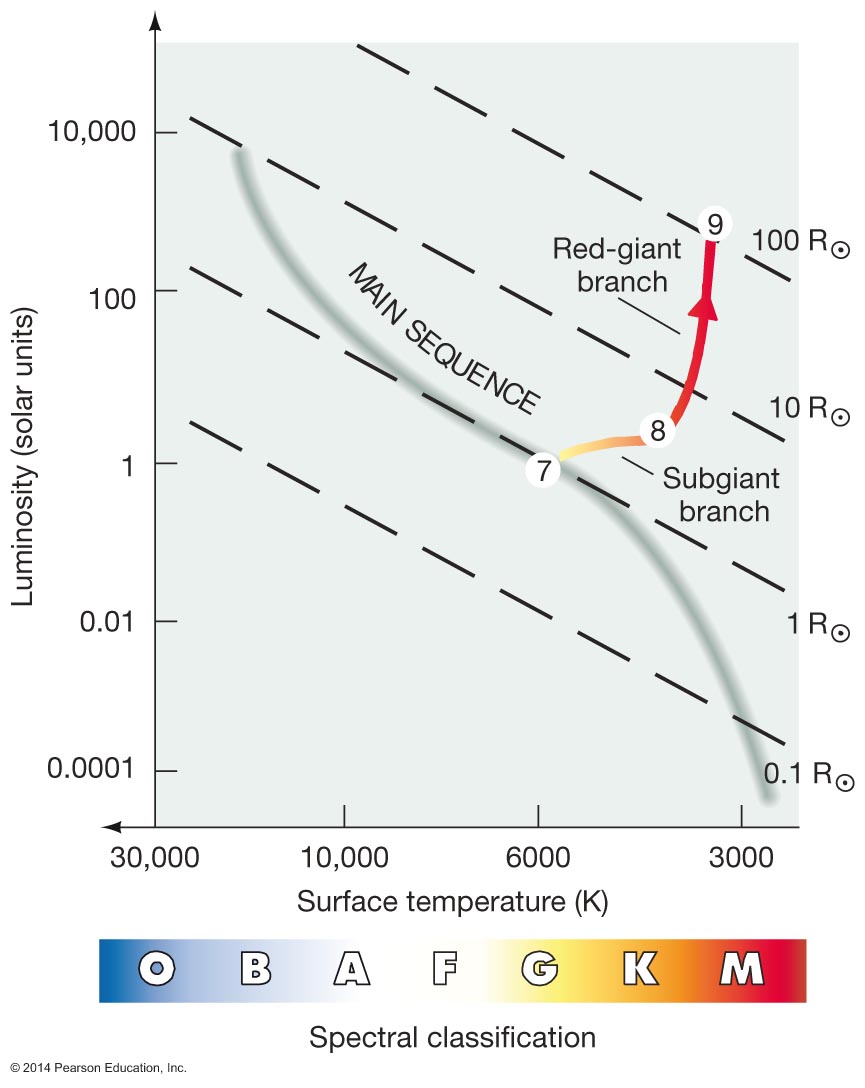 |
|
| 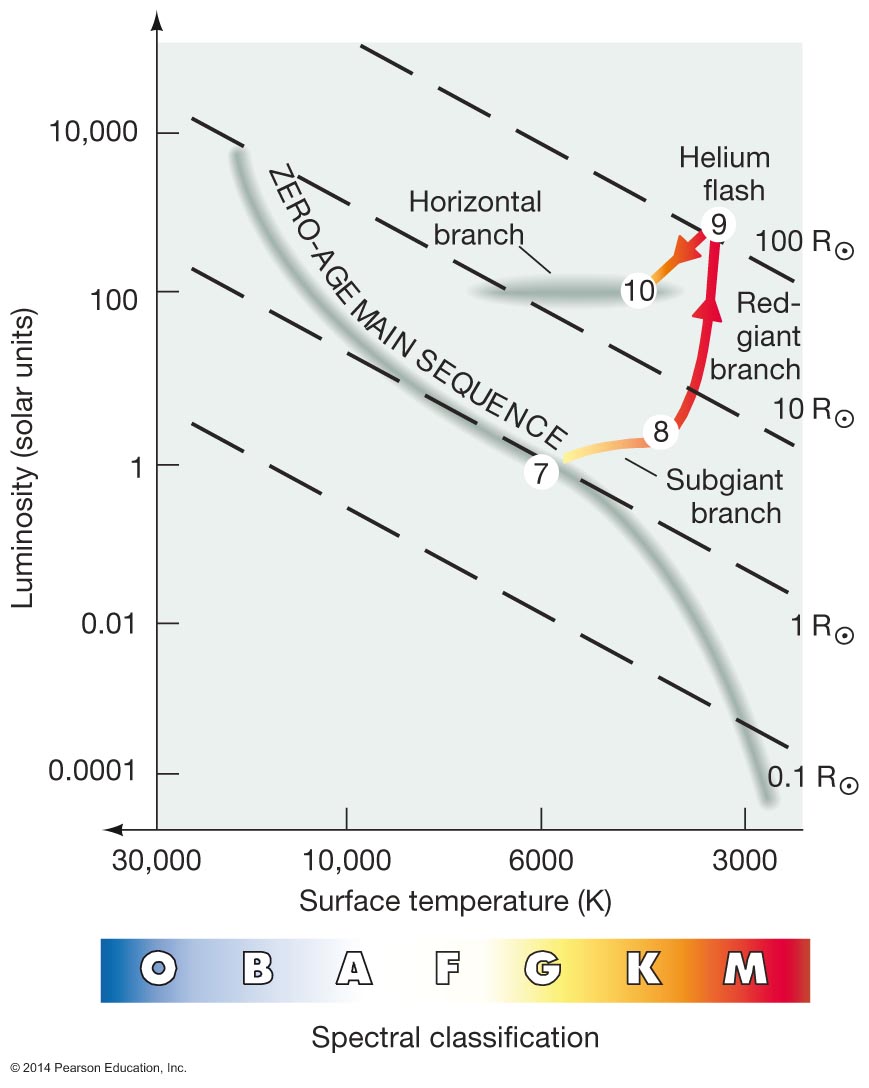 |
After H burning stops in core
|
Collapse to a star in few x 107 yrs Main sequence life lasts 1010 yrs Helium core collapses and star expands into Red GiantHelium flash- core reaches 108K Helium core burns into carbon and oxygen and eventually helium shell burning
Planetary Nebula is ejected (25 - 60% of mass ejected) Expands for about 50,000 yrs before fading Core collapses into white dwarf at center of planetary nebula |
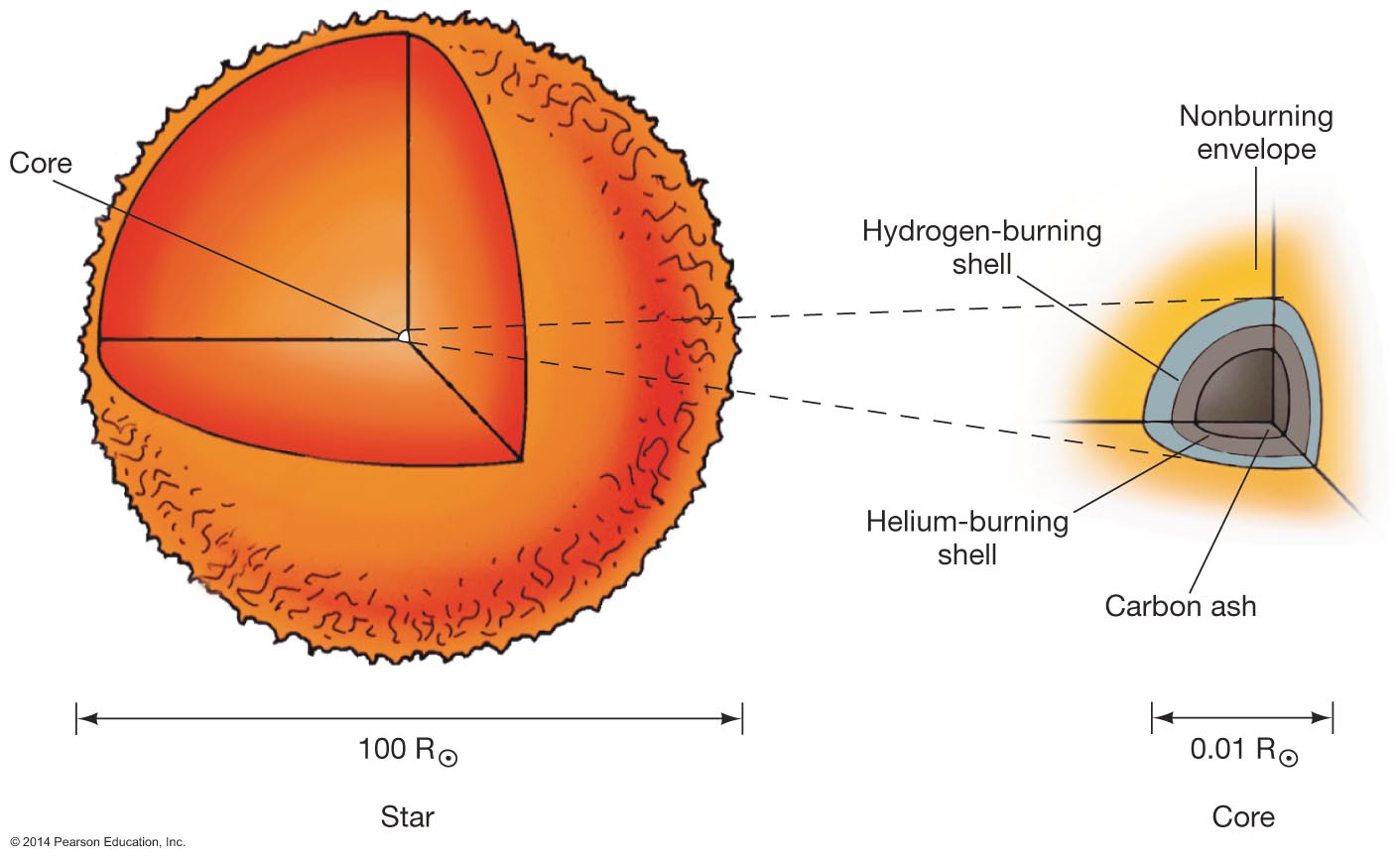 |
Dying low-mass star ejects its outer layers of gas. These gases are ionized by star and glow. (They look a bit like planets through small telescopes, but have nothing to do with planets) Expand for about 50,000 years before fading. Very common (20,000 to 50,000 in the Milky Way) Examples: |
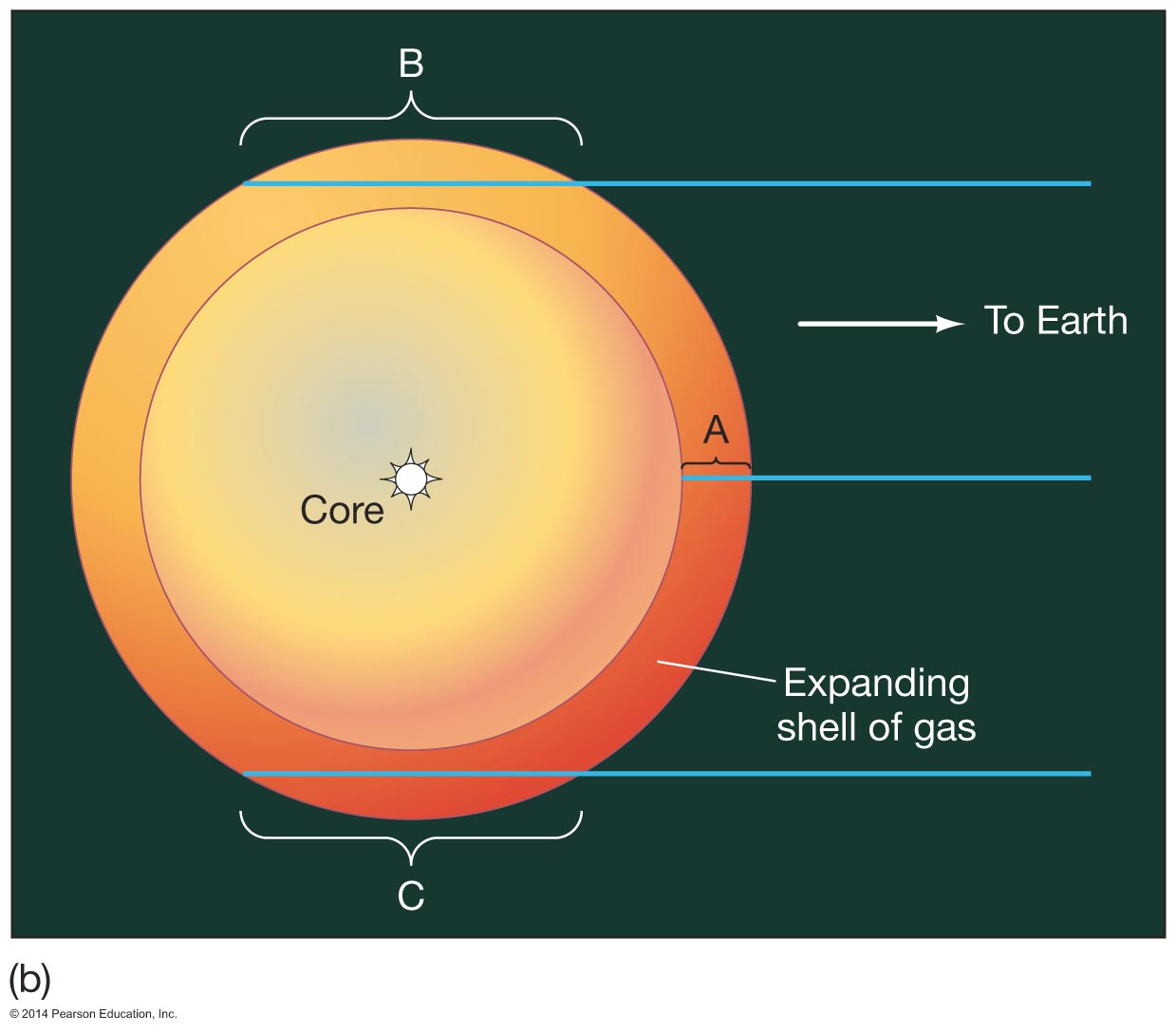 |
After 75,000 years the star becomes a white dwarf cooling to black dwarf. |
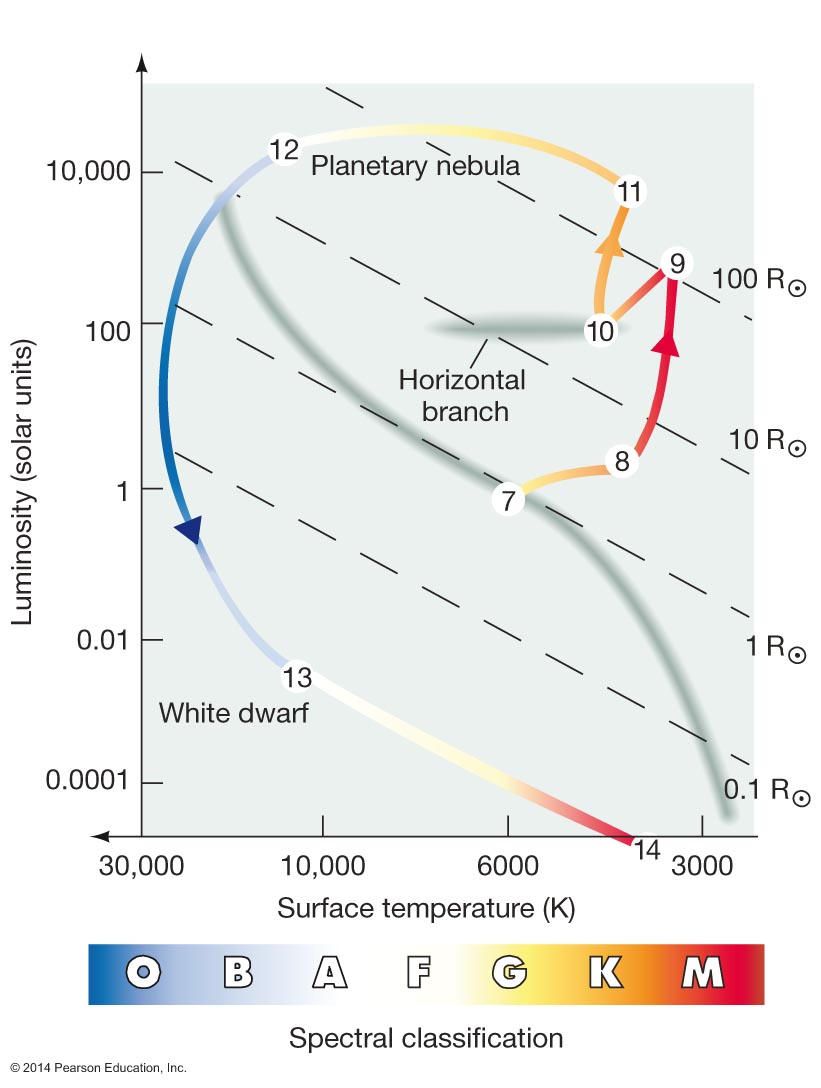 |
If the mass is greater than 1.4 x M SUN, the electron pressure degeneracy cannot support the weight.
Low-mass stars (<3 x M SUN) eject about half their mass in planetary nebula, so star ends up with <1.4 x M SUN
Density in white dwarf is about 106 g/cm3 (1 teaspoon = wt. of truck)
| WATER | 1 g/cm3 | 103 kg/m3 |
|---|---|---|
| LEAD | 11 g/cm3 | 104 kg/m3 |
| CORE OF SUN | 150 g/cm3 | 1.5 x 105 kg/m3 |
| WHITE DWARF | 106 g/cm3 | 109 kg/m3 |
| NEUTRON STAR | 1015 g/cm3 | 1018 kg/m3 |
|---|
After a low-mass star burns its core into carbon and oxygen, heat generation stops and the core collapses again. The core will heat further as gravitational energy is released, but the collapse stops before the core is hot enough to burn carbon and oxygen because of the Pauli Exclusion Principle and Electron Degeneracy. The density in the core will not collapse further and supports gravitational weight of star.
These white dwarfs are cooling, and will eventually become black dwarfs |
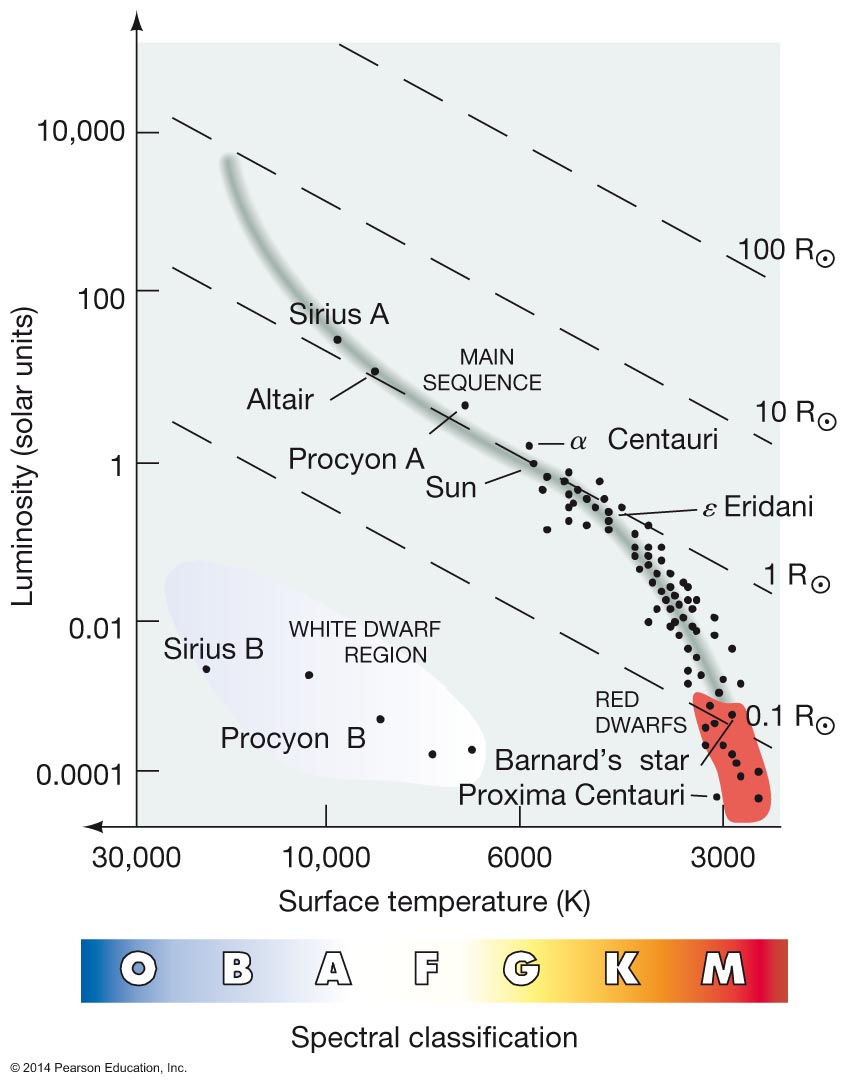 |
Sirius A is member of a binary system with a faint companion: Sirius B
Sirius B surface temp is 27,000 K
but Sirius B mass is about 1.1 x MSUN
|
|  |

|
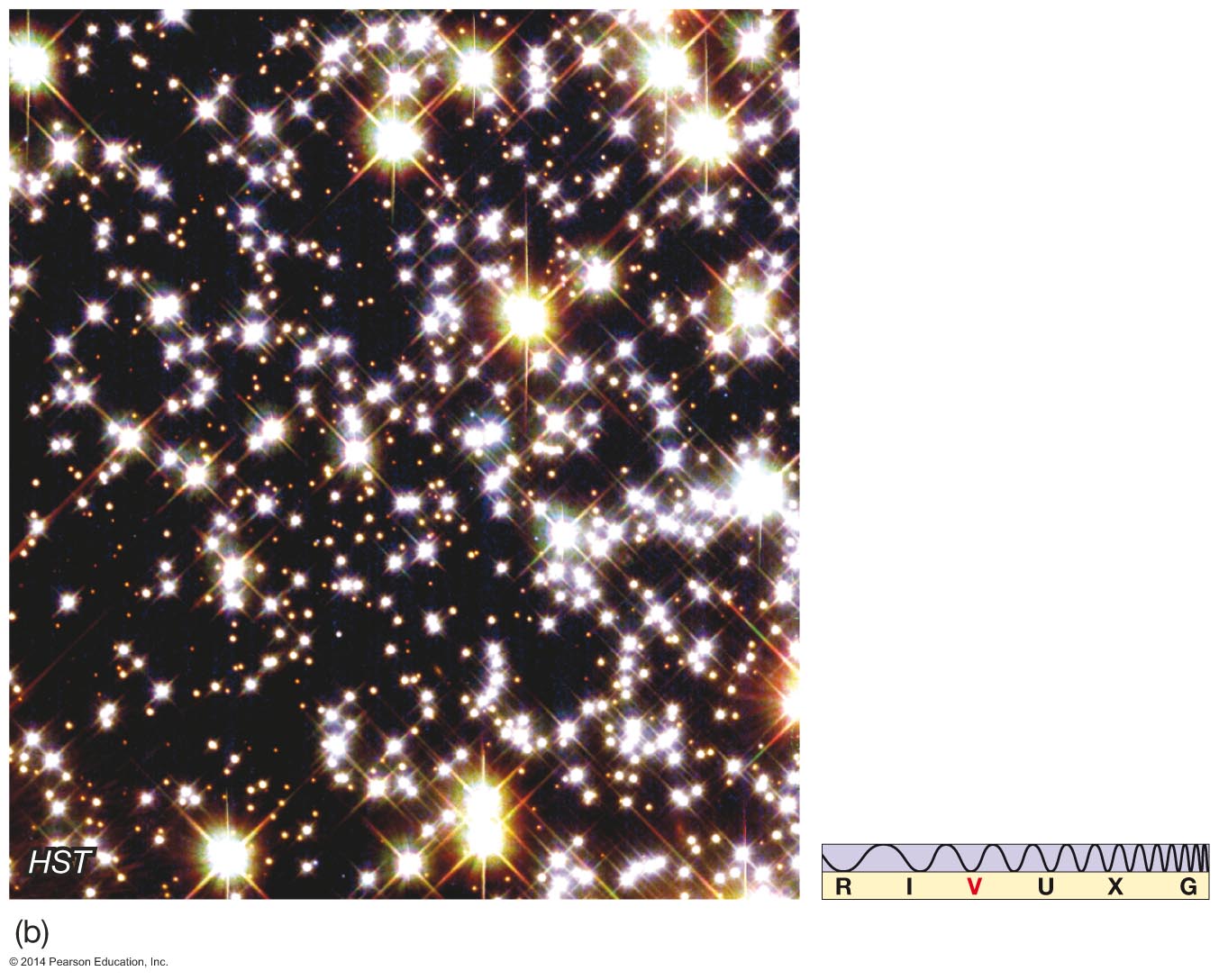 |
Many have not had time to age off the main sequence :
(example from:
0.74 Msun "lives" 20 billion years as main sequence
star
- longer than age of universe)
If mass < 0.08 Msun
Never gets hot enough in core (8 x 10
6 K) to start nuclear reactions
"BROWN DWARF"
Globular Cluster M80
Blue stragglers
|
 |
Old stars are "metal poor"
Young stars are "metal rich"
Metals are not produced in the stars until their death
When they die in an explosion they create metals and spread them into the interstellar medium.
Old stars were created before many stars had died and the interstellar gases had few metals
Young stars were created more recently, after many stars had died and enriched the interstellar medium with metals
Open Clusters
"double cluster" h and chi Persei
|
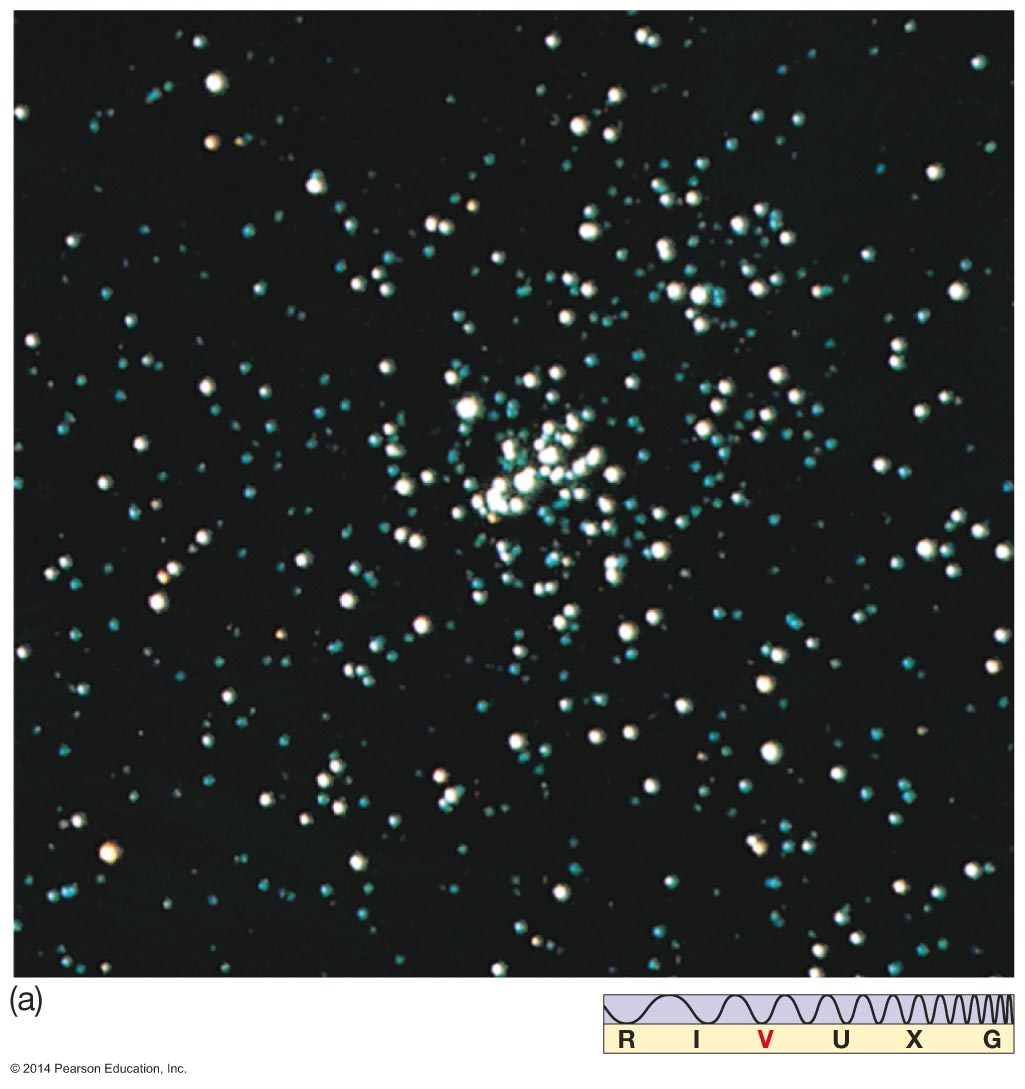 Hyades cluster |
Globular Clusters104 to 105 stars clustered tightly within a few hundred light-years No high mass main sequence stars -> so old cluster 47 Tucanae cluster H-R diagram: upper half of main-sequence missing--
Horizontal branch - post helium flash - low mass stars H-R diagram reveals age Turnoff Point reveals age >10 billion years old |
 Omega Centauri |
As most massive Star grows old,
it may first expand to become a Red
Giant .
|
|  History of Algol |